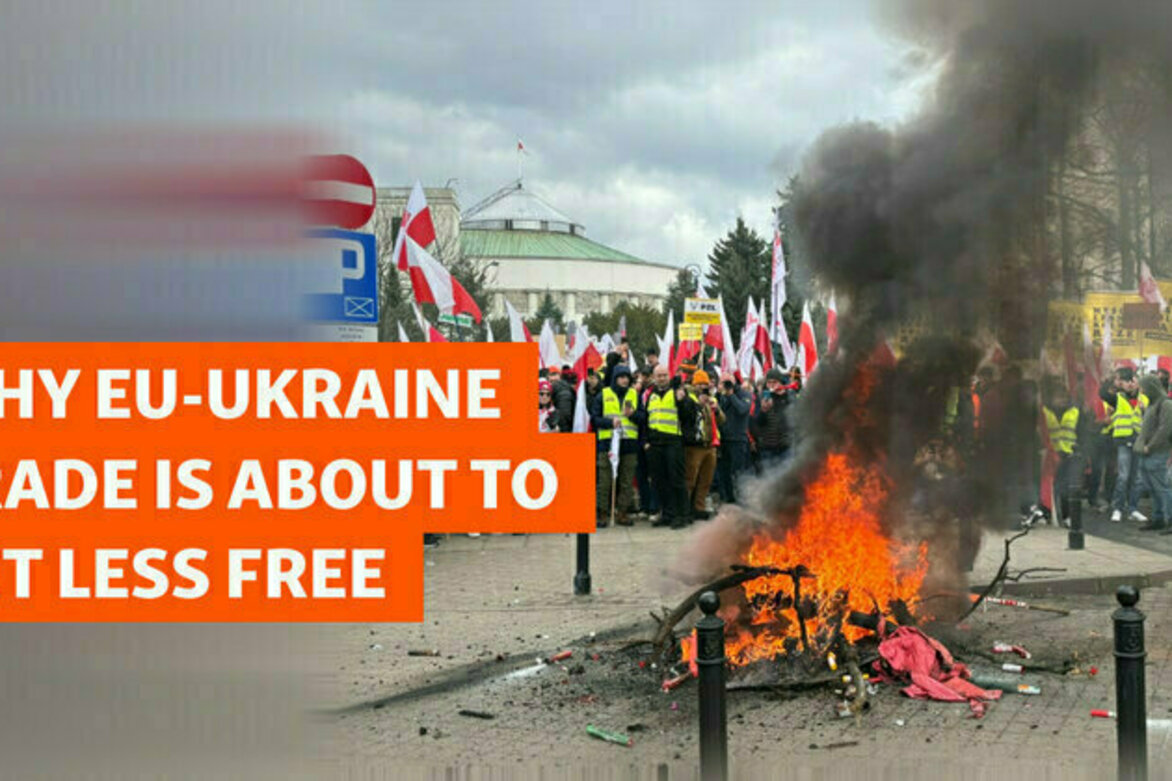Why EU-Ukraine Trade Is About To Get Less Free
RFE
01 May 2025

Since June 2022, the European Union has granted Ukraine full trade liberalization to help support the war-torn countrys economy. These measures -- suspending import duties and quotas -- are known as Autonomous Trade Measures (ATMs), and they appear to have benefited Kyiv.
In 2024, Ukrainian exports to the EU reached nearly 60 percent of total exports, up from 39.1 percent in 2021. However, the ATMs, which have been renewed annually by a majority vote of EU member states, are set to end definitively on June 5. They were always intended to be temporary and could only be extended twice.
Now, negotiations are under way between Brussels and Kyiv on what will replace them.
The fallback option is a return to the EU-UkraineAssociation Agreement, which came into force in 2017 (though provisionally applied from 2016), and includes a free trade component.
The current talks focus on Article 29 of that agreement, which outlines a framework for potential reciprocal tariff liberalization.
Border States Push Back
But it is far from smooth sailing, as time is running short, and the effects of the ATMs arent universally liked in the bloc.
Farmers in so-called frontline EU border states, such as Poland, Slovakia, Hungary, Romania, and Bulgaria, have long lobbied their governments to get rid of them, arguing that a glut of Ukrainian agricultural goods has overwhelmed local storage and pushed down prices for local food producers.
At various times in 2023 and 2024, these farmers blocked the borders with Ukraine to prevent goods from entering the EU. In response, the European Commission, which oversees EU trade policies, tried several solutions, including sealing agricultural shipments from Ukraine to divert them away from frontline countries and toward other EU destinations or ports for export beyond the bloc.
In the end, the commission agreed to limit inflows of the most popular agricultural goods by enacting emergency brakes. These brakes could be pulled if certain imports exceeded the average import numbers recorded between July 1, 2021, and December 31, 2024. And the brakes have been used readily in the past year on Ukrainian exports of oats, eggs, sugar, and honey.
The official line of the European Commission is that it is finalizing the work on the proposal to ensure a seamless transition to a new trade regime with Ukraine after the expiry of the ATMs and that this proposal will soon be presented to Kyiv.
A Political Hot Potato
The question is when. Many EU officials in Brussels are worried that any new proposal could become a political hot potato in the Polish presidential election campaign when the country goes to the polls to select a new head of state on May 18, and a likely second round on June 1.
But it is not only the political sway of Polish farmers that needs to be heeded.
